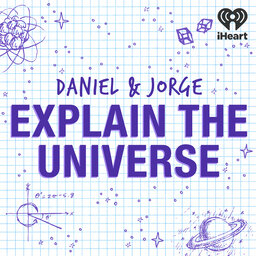What causes the biggest explosions in the universe?
We're taking a deep dive into the subject of supernovas. What causes them? What do we know about them and can they harm us here on earth.?
Learn more about your ad-choices at https://www.iheartpodcastnetwork.com
See omnystudio.com/listener for privacy information.
 Daniel and Jorge Explain the Universe
Daniel and Jorge Explain the Universe


